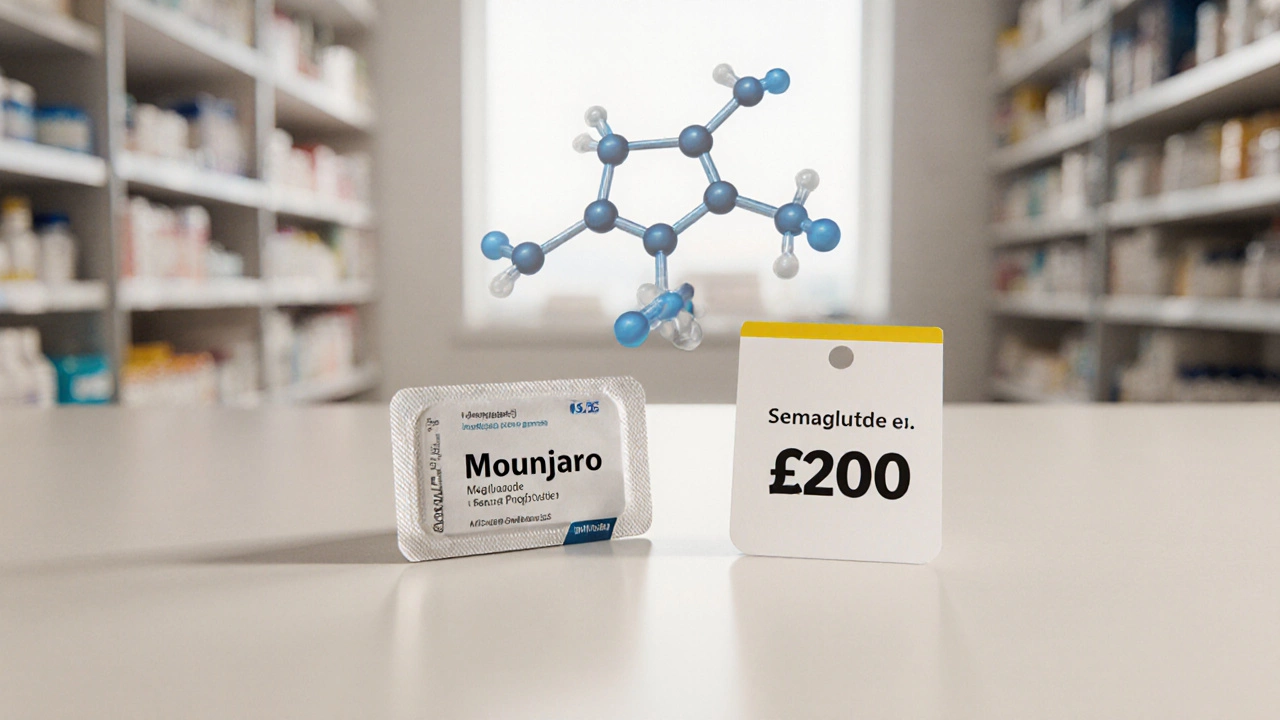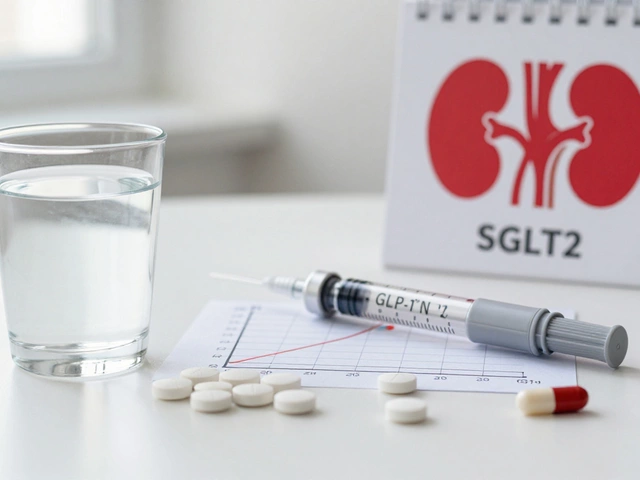Learn how to legally obtain Mounjaro for about $25, avoid scams, and keep costs low with insurance, discount programs, and reputable clinics.
Read MoreWeight Loss Medication Cost: What You Need to Know
When talking about Weight Loss Medication Cost, the price you pay for drugs used to reduce body weight. Also known as cost of weight loss drugs, it varies widely depending on the drug, dosage, and where you get it.
One of the biggest price drivers is the type of GLP-1 agonist, a class of hormones that mimic the gut hormone GLP‑1 to curb appetite. These drugs are often the most effective prescription weight loss options. Brands like Mounjaro (tirzepatide) and semaglutide sit at the high end of the price spectrum, partly because they were originally developed for diabetes.
Key Factors That Drive Prices
First, the drug’s brand status matters. A prescription weight loss drug that’s approved for obesity tends to carry a premium over off‑label uses. Second, dosage frequency influences cost; weekly injections can be pricier per vial but reduce total clinic visits. Third, geographic location and pharmacy choice affect the final bill—urban pharmacies often charge more than government‑run stores.
Insurance coverage is another lever. Some policies cover GLP‑1 agonists if you have a documented medical need, while others label them as “cosmetic” and deny reimbursement. When insurance refuses, patients usually turn to cash‑pay programs or manufacturer coupons, which can shave 20‑30% off the list price.
Supply chain dynamics also play a role. Manufacturing complexities, raw material shortages, and regulatory approvals can cause price spikes. For example, when tirzepatide first hit the market, limited production led to a surge in demand, pushing the cost up for the first six months.
Finally, the prescribing doctor’s expertise matters. Specialists in obesity medicine often have access to bulk purchasing agreements that general practitioners lack. Choosing a clinician who regularly handles weight‑loss pharmacotherapy can lower your out‑of‑pocket expense.
Understanding these factors helps you anticipate the total cost before you start a regimen. If you know the drug’s brand, dosage, insurance status, and your doctor’s specialty, you can better negotiate price or look for discount programs.
To keep costs manageable, consider these practical steps: compare prices across multiple pharmacies, ask about generic alternatives (though many GLP‑1 drugs currently lack generics), and explore patient assistance programs offered by the drug manufacturers. Many companies provide free starter kits or monthly discounts for qualifying patients.
Another tip is to bundle your medication with other health services. Some weight‑loss clinics offer comprehensive packages that include the drug, regular lab tests, and lifestyle coaching for a flat fee, which can be cheaper than paying for each component separately.
Don’t overlook the role of lifestyle changes. While medication can jump‑start weight loss, combining it with diet, exercise, and behavioral therapy often reduces the required dosage, indirectly lowering the price you pay over time.
When evaluating cost, also factor in potential side‑effects. Some GLP‑1 agonists can cause nausea or gastrointestinal issues, leading to additional doctor visits or medication adjustments. Factoring these hidden costs gives you a clearer picture of the true financial commitment.
There’s a growing trend of online tele‑health platforms offering weight‑loss prescriptions at a lower price point. These services typically partner directly with pharmacies, cutting out the middleman and passing savings onto the patient. However, ensure the platform is reputable and that you receive proper medical oversight.
In short, Weight Loss Medication Cost isn’t a single number—it’s a range shaped by drug type, dosage, insurance, pharmacy, and doctor. By breaking down each component, you can make an informed decision that fits both your health goals and your budget.
Below you’ll find a curated selection of articles that dive deeper into specific drugs, cost‑saving strategies, and real‑world experiences. Whether you’re curious about Mounjaro pricing, want to compare semaglutide versus other options, or need tips on navigating insurance, the posts ahead cover the ground you need to walk.





